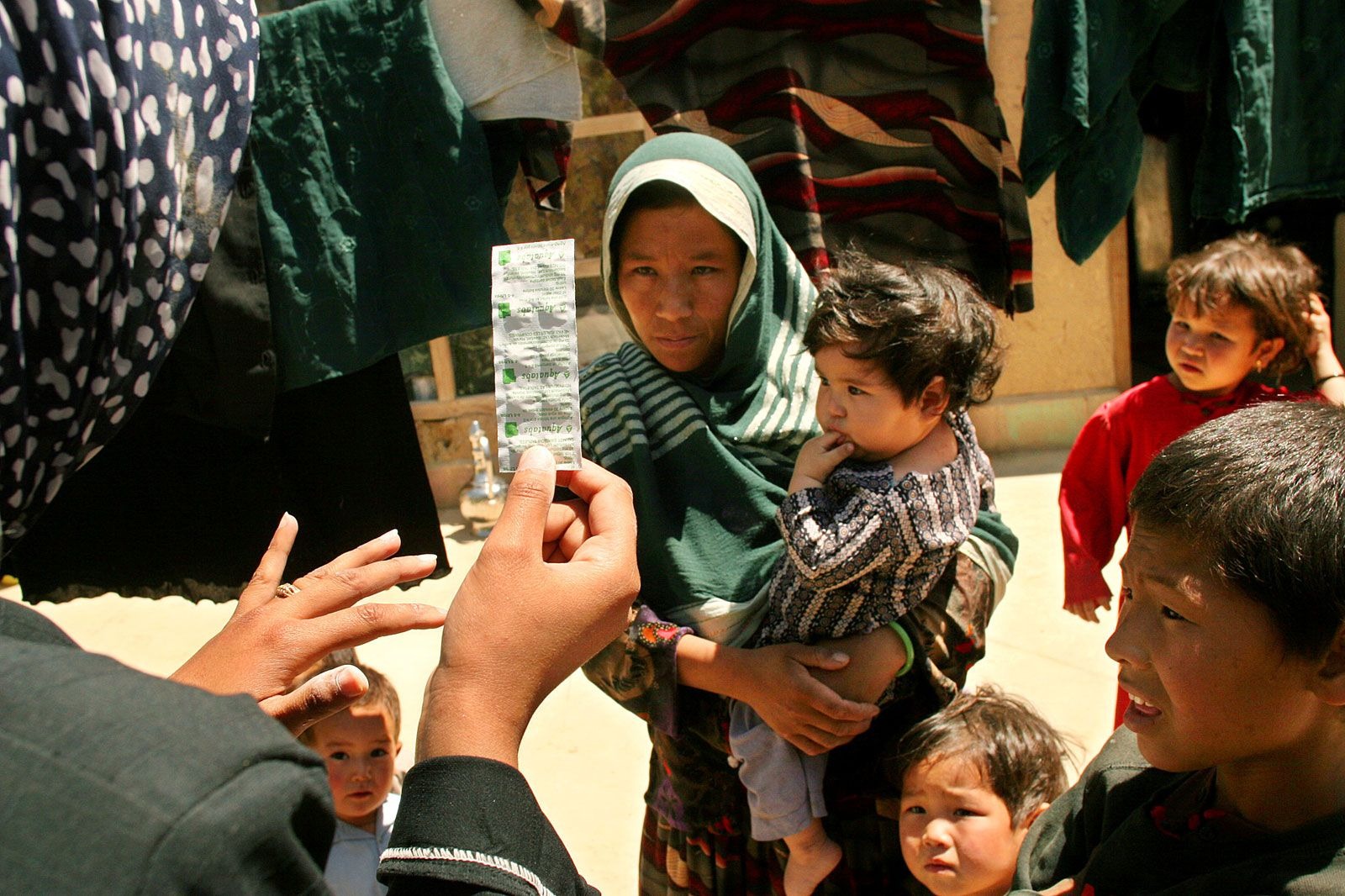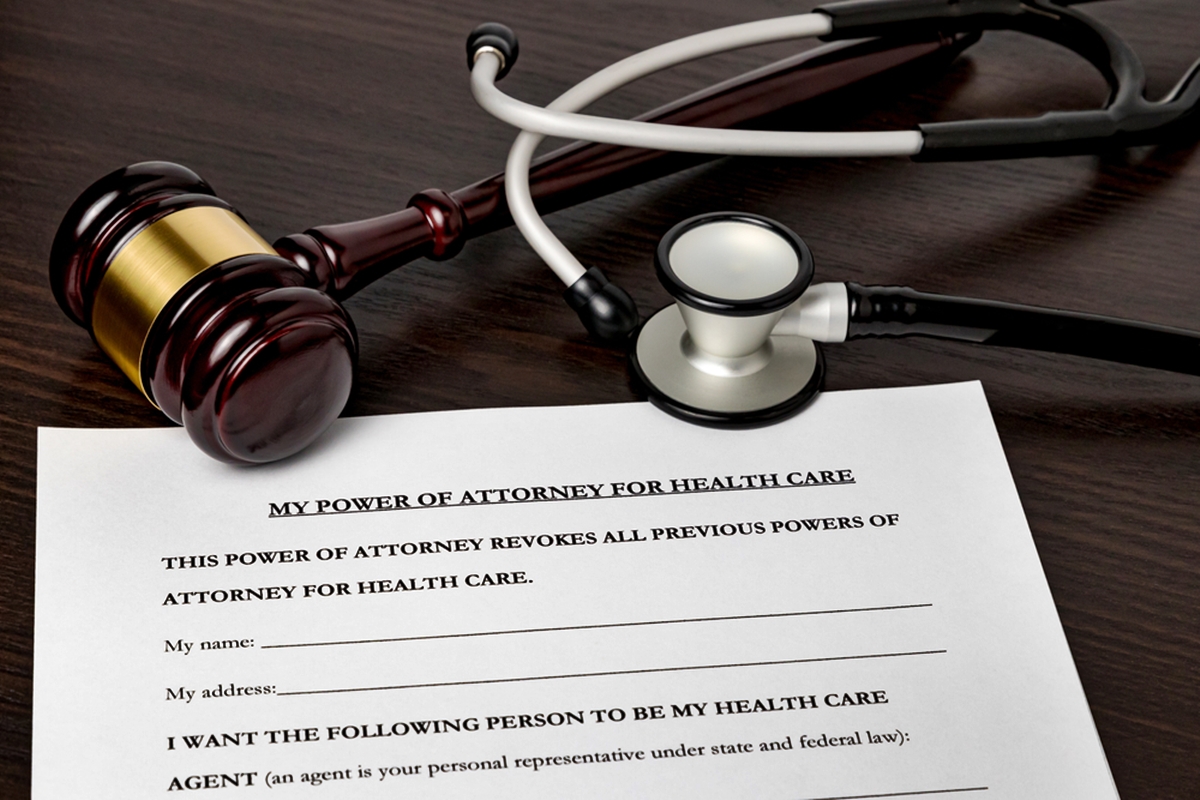Home>Misc>Featured>When Does The Public Health Emergency End


Featured
When Does The Public Health Emergency End
Modified: January 2, 2024
Discover when the public health emergency comes to an end and stay informed with our featured articles on this crucial topic.
Introduction
A public health emergency refers to a situation in which the health of a population is at serious risk, often due to the outbreak of a disease, natural disaster, or other health-related incidents. These emergencies can have significant implications on the physical, mental, and social well-being of individuals, as well as the overall functioning of communities and societies.
When faced with a public health emergency, it becomes crucial to implement appropriate measures to mitigate the impact and restore the normal functioning of society. However, determining when a public health emergency comes to an end is not always a straightforward process. It requires careful evaluation of various factors, including the control of the disease or the resolution of the crisis, and the restoration of essential services.
The purpose of this article is to explore the criteria and considerations involved in ending a public health emergency. We will delve into the role of government, the public health measures to consider, and the challenges that may arise in bringing an end to such emergencies. Additionally, we will examine case studies of successful endings of public health emergencies to gain valuable insights and lessons learned.
It is important to note that ending a public health emergency does not imply an immediate return to normalcy. In fact, the repercussions of the emergency may linger for weeks, months, or even years after its official declaration. Therefore, the focus should be on transitioning from emergency response to long-term recovery and building resilience in the affected communities.
Overall, understanding the process of ending a public health emergency is essential for effective crisis management and to ensure the well-being of the affected population. By exploring the criteria, challenges, and successful case studies, we can gain valuable insights into the complex nature of these emergencies and foster better preparedness for future crises.
Definition of a Public Health Emergency
A public health emergency is a situation that poses a significant risk to the health and well-being of a population. It is characterized by the outbreak or occurrence of a disease, the threat of a disease, or a condition that requires immediate action to prevent or control its spread. Public health emergencies can be caused by infectious diseases, natural disasters, environmental hazards, or other health-related crises.
The World Health Organization (WHO) defines a public health emergency as “an occurrence or imminent threat of an illness or health condition, caused by bioterrorism, epidemic or pandemic disease, natural disaster, or chemical or radiological exposure, that poses a substantial risk of a significant number of people or a significant increase in morbidity or mortality.”
In the context of a disease outbreak, a public health emergency is declared when there is an unexpected increase in the number of cases or deaths, and the spread of the disease is deemed to be of urgent concern. This declaration enables governments and public health agencies to mobilize resources, implement emergency response plans, and adopt measures to contain and manage the outbreak.
Public health emergencies can also arise from natural disasters such as earthquakes, hurricanes, or floods. These events can displace populations, disrupt healthcare systems, and increase the risk of communicable diseases. In such cases, the focus is on providing immediate medical assistance, ensuring access to clean water and sanitation facilities, and implementing measures to prevent disease outbreaks in emergency shelters.
Environmental hazards like chemical spills, radiation leaks, or air pollution can also trigger public health emergencies. These incidents require swift action to safeguard the health of the affected population, including evacuation, decontamination, and monitoring of exposure levels.
Overall, a public health emergency is a critical situation that demands an immediate response to protect the health and well-being of individuals and communities. It requires a coordinated effort among government agencies, healthcare providers, emergency responders, and the general public to mitigate the impact and ensure a timely return to normalcy.
Determining Factors for Ending a Public Health Emergency
Ending a public health emergency involves a careful assessment of various factors to determine when it is safe to declare the emergency over. While each situation is unique, there are specific factors that are commonly considered in the decision-making process.
1. Disease Transmission Control: One of the primary factors in ending a public health emergency is the successful control of disease transmission. This involves monitoring the number of new cases, the rate of infection, and the effectiveness of containment measures such as quarantine, isolation, and social distancing. A significant decline in cases and sustained lower transmission rates indicate progress in controlling the outbreak.
2. Healthcare System Capacity: The capacity of the healthcare system to handle the influx of patients plays a crucial role in ending a public health emergency. If hospitals and healthcare facilities are no longer overwhelmed and can provide necessary care without compromising quality, it is an indication that the emergency situation is approaching its end.
3. Availability of Effective Treatments and Vaccines: The development and availability of effective treatments and vaccines can significantly impact the decision to end a public health emergency. If there are therapeutic interventions that reduce the severity of the illness or vaccines that prevent infection, it provides a pathway towards containment and ultimately ending the emergency.
4. Declining Mortality Rate: Monitoring the mortality rate is essential in determining the progress of controlling a public health emergency. A sustained decrease in the number of deaths related to the disease indicates improved medical interventions, better healthcare access, and overall management of the crisis.
5. Risk Assessment and Surveillance: Ongoing risk assessment and surveillance are crucial in determining when to end a public health emergency. This includes assessing the potential for resurgence, identifying new variants or strains, and monitoring indicators of community transmission. Timely and accurate surveillance helps inform decisions and recognize any emerging risks.
6. Public Health Infrastructure: The readiness and capacity of the public health infrastructure are vital in determining the end of a public health emergency. This includes the availability of testing capabilities, contact tracing resources, and the ability to provide necessary public health services and interventions.
7. Community Engagement and Compliance: The cooperation and compliance of the community in adhering to public health guidelines and preventive measures are crucial in bringing an end to a public health emergency. If the majority of the population demonstrates responsible behavior, it helps reduce transmission rates and contributes to the overall containment efforts.
It is important to note that these factors are interconnected and dynamic. The decision to end a public health emergency requires a holistic evaluation of the collective impact of these factors. Additionally, the announcement of the end of an emergency does not mean a complete eradication of the disease, but rather a transition from emergency response to long-term management and recovery.
Role of Government in Ending a Public Health Emergency
The government plays a pivotal role in ending a public health emergency. Through its policies, regulations, and resources, the government is responsible for coordinating and implementing strategies to contain the spread of diseases, mitigate the impact on the population, and ultimately bring an end to the emergency. Here are some key roles that the government assumes in this process:
1. Emergency Preparedness and Response: Governments are responsible for establishing robust emergency preparedness plans to effectively respond to public health emergencies. This includes developing protocols, allocating resources, and establishing coordination mechanisms among various government agencies, healthcare providers, and other stakeholders. By having a well-prepared and responsive system in place, the government can take immediate action in the event of an emergency.
2. Regulation and Legislation: Governments enact regulations and legislation to enforce public health measures and ensure compliance. This may involve implementing quarantine protocols, mandating the use of personal protective equipment, enacting travel restrictions, and enforcing social distancing measures. These regulations are critical in controlling the spread of diseases during an emergency and safeguarding public health.
3. Information Dissemination: Governments play a crucial role in providing accurate and timely information to the public during a public health emergency. This includes disseminating information about the nature of the emergency, preventive measures, treatment options, and available resources. Transparent and reliable communication from the government helps to reduce fear, misinformation, and confusion among the population.
4. Resource Allocation: Governments mobilize and allocate resources to support healthcare systems, public health agencies, and affected communities. This includes providing funding for medical facilities, equipment, supplies, and personnel. Additionally, governments may offer financial assistance and support programs to individuals and businesses impacted by the emergency.
5. Collaborations and Partnerships: Governments collaborate with international organizations, non-governmental organizations, and other countries to exchange information, share resources, and coordinate efforts to combat the public health emergency. Cooperation and partnerships at the national and international level help to leverage expertise, technology, and resources, leading to a more effective response and eventual resolution of the emergency.
6. Monitoring and Evaluation: Governments monitor the progress of response efforts and evaluate the effectiveness of measures implemented during the emergency. This enables them to identify areas of improvement, make necessary adjustments to strategies, and ensure that control measures are working as intended. Regular monitoring and evaluation provide insights that inform decision-making and help in determining when it is appropriate to declare the end of the emergency.
In summary, the role of government in ending a public health emergency is multi-faceted. It involves developing preparedness plans, enacting regulations, disseminating information, allocating resources, fostering collaborations, and monitoring progress. Through effective governance and proactive measures, governments play a crucial role in safeguarding the health and well-being of the population and ultimately bringing an end to the public health emergency.
Public Health Measures to Consider in Ending a Public Health Emergency
Ending a public health emergency requires the implementation of strategic public health measures aimed at reducing transmission, protecting vulnerable populations, and restoring societal functioning. These measures are essential in bringing the emergency under control and preventing further outbreaks. Here are some crucial public health measures to consider:
1. Vaccination Programs: Vaccination plays a critical role in ending a public health emergency, especially in the case of infectious diseases. Governments should prioritize the development, distribution, and administration of vaccines to the population. This helps achieve herd immunity, reduces the risk of transmission, and prevents future outbreaks.
2. Testing and Contact Tracing: Robust testing and contact tracing strategies are essential in identifying and isolating individuals who may be infected with the disease. Widespread testing helps in early detection, while contact tracing helps identify and quarantine individuals who may have been exposed. This helps to break the chain of transmission and control the spread of the disease.
3. Surveillance and Monitoring: Maintaining strong surveillance systems is crucial for detecting and monitoring any potential resurgence of the disease. Continual monitoring of disease trends, new cases, and emerging variants or strains allows for prompt identification and response to any signs of a recurring outbreak.
4. Continued Public Health Education: Public health education must be ongoing, even as the emergency nears its end. Governments should provide accurate and up-to-date information on preventive measures, symptom recognition, and appropriate actions to take if individuals develop symptoms. Educating the public helps ensure a vigilant and informed population that can continue to practice preventive measures even after the emergency period.
5. Safe and Gradual Reopening: Gradual reopening of businesses, schools, and public spaces is a crucial step in ending a public health emergency. Governments should implement phased approaches that prioritize the safety and well-being of the population. This may include capacity restrictions, physical distancing measures, mask mandates, and enhanced hygiene protocols.
6. Enhanced Healthcare Infrastructure: Strengthening healthcare infrastructure is vital in meeting the long-term needs of the population. This includes expanding medical facilities, ensuring availability of healthcare personnel, and enhancing the capacity to respond to any future public health emergencies. Investing in healthcare infrastructure helps build resilience and preparedness for future crises.
7. Mental Health Support: Public health emergencies not only have physical health impacts but can also take a toll on mental well-being. Providing access to mental health support and resources is essential in helping individuals cope with the psychological effects of the emergency. Governments should prioritize mental health services and destigmatize seeking help.
In summary, a combination of vaccination programs, testing and contact tracing, surveillance, public health education, safe reopening, enhanced healthcare infrastructure, and mental health support are vital public health measures to consider in bringing an end to a public health emergency. These measures, when implemented effectively, contribute to the control of the disease, protection of the population, and restoration of normalcy.
Challenges in Bringing an End to Public Health Emergencies
Bringing an end to a public health emergency is a complex process that involves numerous challenges. These challenges can impede progress and prolong the duration of the emergency. Understanding and addressing these challenges is crucial for effective crisis management. Here are some of the key challenges:
1. Variability of the Disease: Public health emergencies are often characterized by the presence of a new or rapidly evolving disease. The variability of the disease, including its transmissibility, severity, and potential for mutation, can pose challenges in control and containment efforts. Adapting response strategies to accommodate these variables requires continuous monitoring and adjustment.
2. Limited Resources: Public health emergencies typically strain healthcare systems, testing capacities, and supplies. The availability of limited resources, including medical facilities, trained personnel, and essential medical supplies, can hamper response efforts. Ensuring adequate resource allocation and prioritization is crucial to overcome these challenges.
3. Misinformation and Rumors: The presence of misinformation and rumors can hinder the effectiveness of public health measures. False information spreads rapidly during emergencies, leading to confusion, distrust, and non-compliance with public health guidelines. Governments and public health authorities must address misinformation through timely and accurate communication to maintain public trust.
4. Vaccine Hesitancy: Vaccine hesitancy, the reluctance or refusal to receive vaccines, can pose a significant challenge in ending a public health emergency. Public perception, concerns about safety and efficacy, and misinformation can contribute to vaccine hesitancy. Educating the public about the importance and safety of vaccines is crucial in combating this challenge.
5. Resistance to Public Health Measures: Resistance and non-compliance with public health measures, such as mask-wearing, physical distancing, and quarantine, can hinder efforts to control the spread of the disease. Overcoming resistance requires effective communication, community engagement, and addressing concerns or misconceptions held by individuals or specific communities.
6. Socioeconomic Impacts: Public health emergencies often have profound socioeconomic impacts on individuals and communities. Loss of income, job insecurity, disruptions in education, and social isolation can contribute to the overall burden of the emergency. Mitigating these impacts and providing support to affected individuals and businesses is essential for recovery.
7. Global Coordination: Public health emergencies can transcend national boundaries, requiring global coordination and cooperation. Challenges in global coordination, including disparities in resources, varying response strategies, and geopolitical tensions, can hinder the effective management of emergencies. Strengthening international collaboration and coordination mechanisms is crucial to overcome these challenges.
It is important to recognize that these challenges are interconnected and dynamic. Addressing one challenge may impact others, requiring ongoing assessment and adaptation of response strategies. By understanding and proactively addressing these challenges, governments, healthcare systems, and communities can work together to bring an end to public health emergencies more effectively.
Case Studies: Successful Endings of Public Health Emergencies
Examining case studies of successful endings of public health emergencies provides valuable insights into effective strategies and approaches. Learning from past experiences helps inform future preparedness and response efforts. Here are a few notable case studies:
1. SARS (Severe Acute Respiratory Syndrome) Outbreak: In 2003, the SARS outbreak emerged and spread to several countries, causing significant morbidity and mortality. Through international collaboration, early detection, rapid response, and stringent public health measures, the outbreak was successfully contained. Strict infection control measures, quarantine protocols, and public education campaigns played a crucial role in bringing the SARS outbreak under control.
2. Ebola Epidemic in West Africa: The Ebola epidemic that struck West Africa from 2014 to 2016 was one of the largest and deadliest outbreaks in history. Through a coordinated international response, including robust surveillance, contact tracing, treatment facilities, and public health education, the epidemic was eventually brought under control. Vaccination campaigns and community engagement were key factors in halting the spread of the disease.
3. Polio Eradication Initiative: The global effort to eradicate polio provides a remarkable example of successful public health intervention. Through widespread vaccination campaigns, strong surveillance systems, and targeted response efforts, polio cases have been drastically reduced worldwide. Various stakeholders, including governments, international organizations, and community leaders, have collaborated to overcome challenges and bring an end to this devastating disease.
4. COVID-19 Control in New Zealand: New Zealand’s response to the COVID-19 pandemic has been hailed as a success story. The government implemented strict border controls, widespread testing and contact tracing, and a nationwide lockdown to control the spread of the virus. Effective communication, community engagement, and adherence to public health measures allowed the country to eliminate local transmission and return to a relatively normal state of affairs.
5. Smallpox Eradication: The successful eradication of smallpox stands as a testament to the power of global coordination and vaccination. Through an intensive worldwide vaccination campaign backed by surveillance, containment, and community engagement efforts, smallpox was declared eradicated in 1980. This achievement demonstrates the feasibility of eradicating a disease through sustained international collaboration and public health interventions.
These case studies highlight the importance of early detection, rapid response, strong public health measures, community engagement, and international collaboration in bringing an end to public health emergencies. By learning from successful experiences, governments and public health authorities can enhance preparedness, response capabilities, and overall resilience to future emergencies.
Conclusion
Bringing an end to a public health emergency requires a coordinated and multifaceted approach. It involves careful evaluation of disease transmission, healthcare system capacity, availability of treatments and vaccines, and ongoing surveillance. The government plays a crucial role in managing the emergency, enacting regulations, disseminating information, and allocating resources. Public health measures such as vaccination programs, testing and contact tracing, safe reopening, and mental health support are vital in controlling the spread of the disease and mitigating its impact.
Nevertheless, numerous challenges exist in ending public health emergencies. The variability of the disease, limited resources, misinformation, vaccine hesitancy, non-compliance with public health measures, socioeconomic impacts, and the need for global coordination all pose significant hurdles. Addressing these challenges requires ongoing adaptation, effective communication, community engagement, and international collaboration.
By examining successful case studies, we gain valuable insights into effective strategies and approaches. Examples such as the control of SARS, the Ebola epidemic, the polio eradication initiative, the COVID-19 response in New Zealand, and the eradication of smallpox demonstrate the importance of strong public health measures, community engagement, and international collaboration in successfully ending public health emergencies.
In conclusion, the process of ending a public health emergency is complex and dynamic, necessitating continuous evaluation, adaptation, and collaboration. By understanding the determining factors, the role of government, the necessary public health measures, the challenges involved, and learning from past successes, we can enhance our preparedness and response to future emergencies. Through collective efforts and effective crisis management, we can protect the health and well-being of the population and minimize the impact of public health emergencies on society as a whole.









